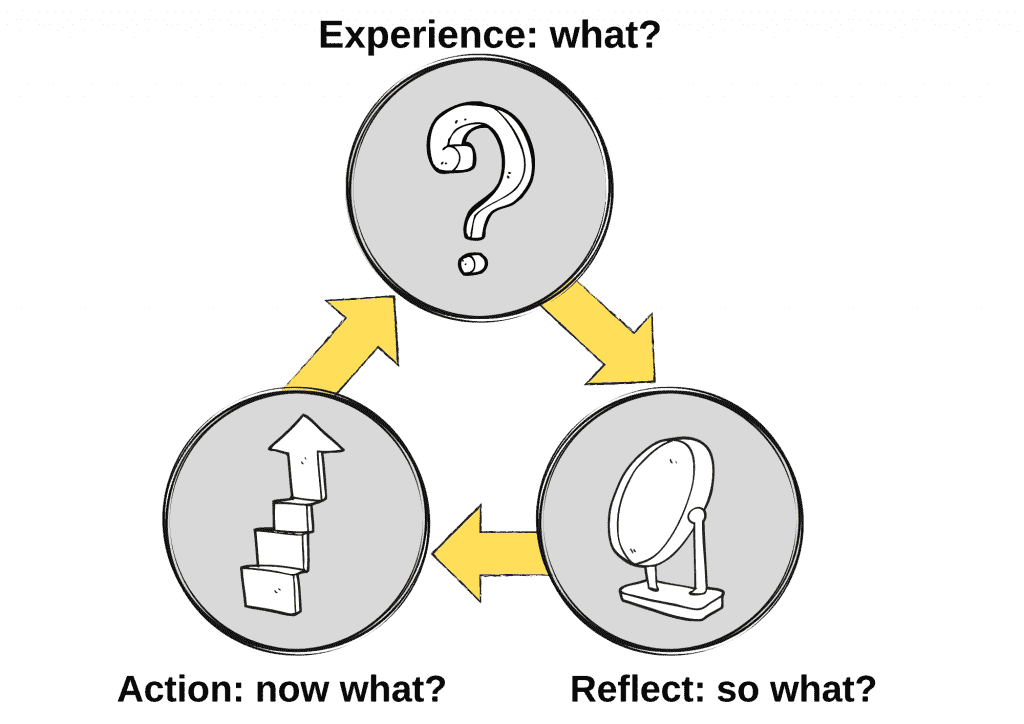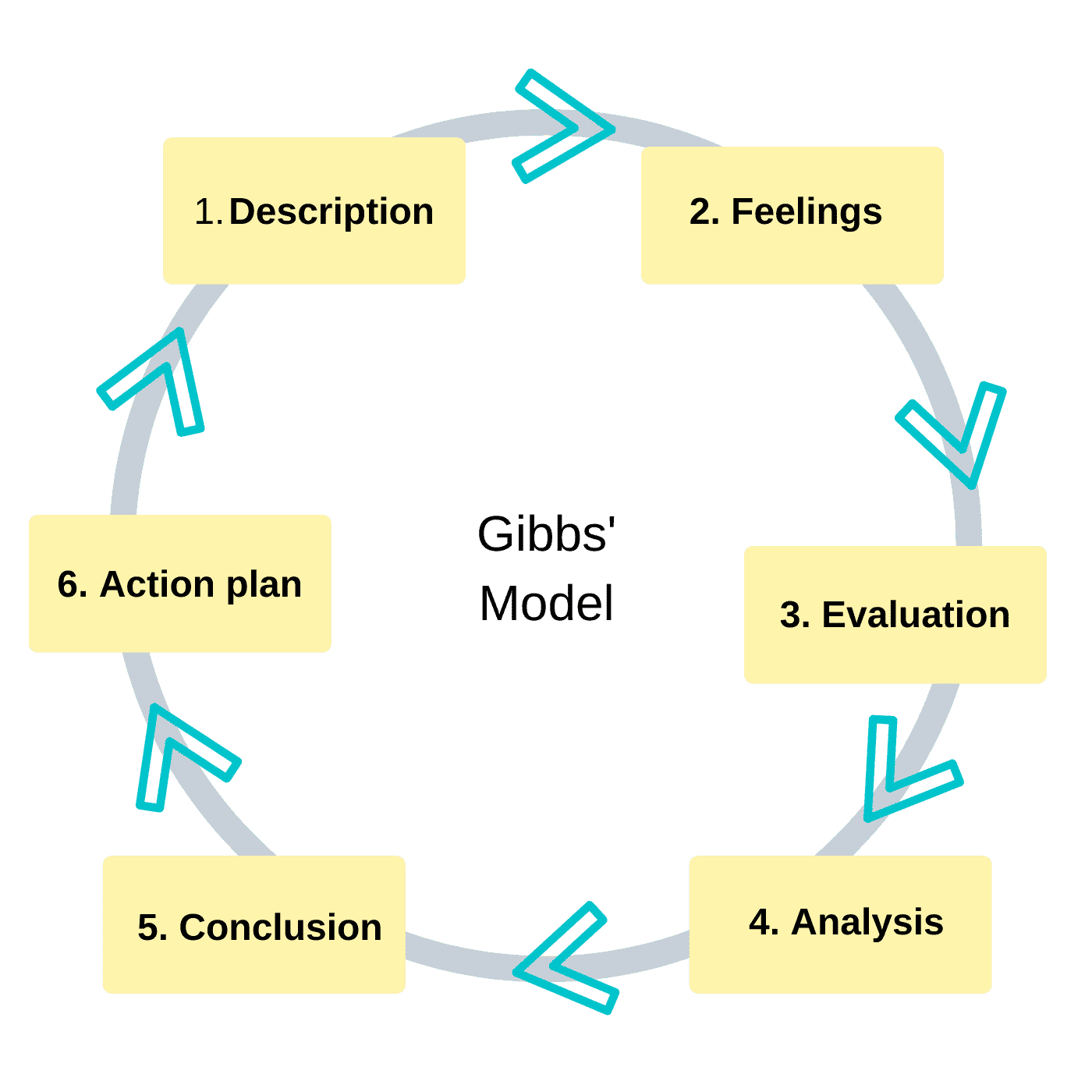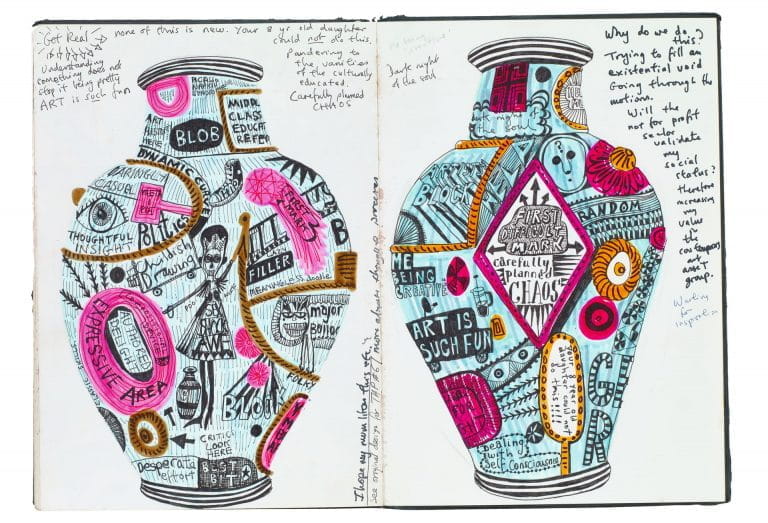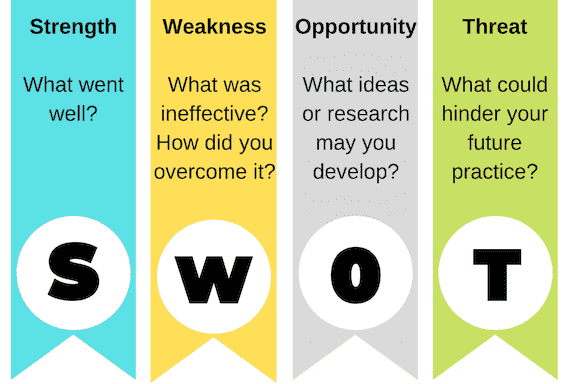Reflective writing
What is reflective writing?
Edition.

- A basic pattern (see above) involves describing what occurred, reflecting on why this might be significant and what has been learnt, and thinking about your next actions.
- Focus on key events rather than trying to cover everything.
- This could include positive or critical incidents ‘which we interpret as a problem or challenge’ (Bassot, 2016, p. 42).
- You can learn more about reflective writing in the video below from Hull University.
1. Reflective journals
- Similar to a diary, it records your thoughts on a weekly or regular basis.
- Gibbs’ (1888, cited in William, Woolliams and Spiro, 2016, p. 91) cycle can aid detailed reflection.
- Description: What happened?
- Feelings: What were you thinking or feeling?
- Evaluation: What was good or bad about the experience?
- Analysis: What sense can you make of the situation?
- Conclusion: What else could you have done?
- Action: If it arose again, what would you do?

- See a reflective journal by a past Norwich University of the Arts, Fine Art student: http://hannahjohnstonart.tumblr.com/
- View artists’ blogs pages at a-n The Artists Information Company: https://www.a-n.co.uk/blogs
Tip
Set aside regular times for reflection; this will help you to remember events more clearly.
2. Sketchbooks

- Sketchbooks may include initial drawings and ideas, design development, sources of inspiration, technical information, material samples and experiments.
- Overall, they act as a space to ‘pause, record, reflect, move on’ (Greenless, 2005, p. 13).
- As part of recording, use annotation to document process (what materials, processes or techniques were used), analysis (why you did it) and evaluation (how effective it was).
3. Evaluations
- Evaluations reflect back on a completed project; this may include stages such as aims, research, experimentation and final outcomes.
- They also involve considering both strengths and weaknesses.
- Try the SWOT analysis framework to get started.

Sources consulted
- Bassot, B. (2016) The reflective journal. 2nd Edition. Basingstoke: Palgrave Macmillan.
- Driscoll, J. (ed.). (2007). Practising clinical supervision: a reflective approach for healthcare professionals. Edinburgh: Balliere Tindall.
- Greenless, K. (2005) Creating sketchbooks for embroiderers and textile artists. London: B. T. Batsford.
- Jasper, M. (2003) Beginning reflective practice. Cheltenham: Nelson Thornes Ltd.
- Moon, J. (2006) Learning journals. 2nd Edition. London: Routledge.
- Stobart, J. (2011) Extraordinary sketchbooks. London: Bloomsbury Publishing PLC.
- The Guardian (2016) Inside Grayson Perry’s sketchbook. Available at: www.theguardian.com/artanddesign/2016/feb/19/inside-grayson-perrys-sketchbook#img- (Accessed: 22 May 2019).
- Williams, K., Woolliams, M. and Spiro, J. (2012) Reflective writing. Basingstoke: Palgrave Macmillan.

eBooks:
Try these resources available on Ebook Central: https://tinyurl.com/qnsstox
